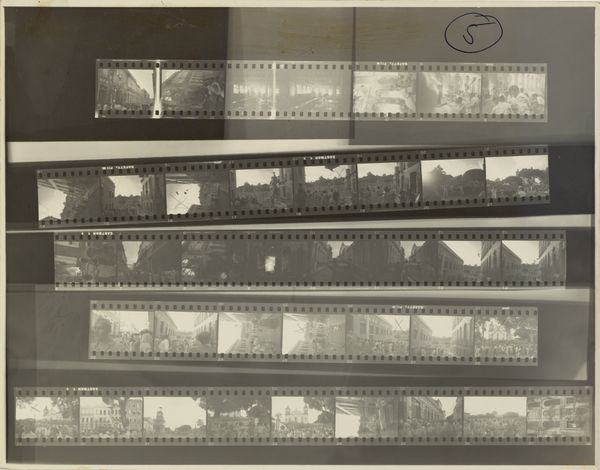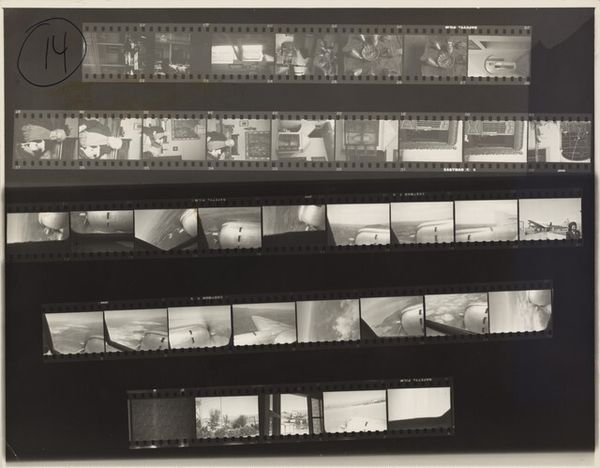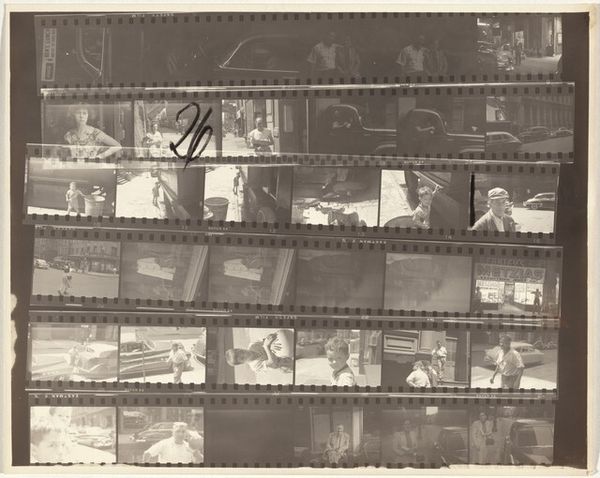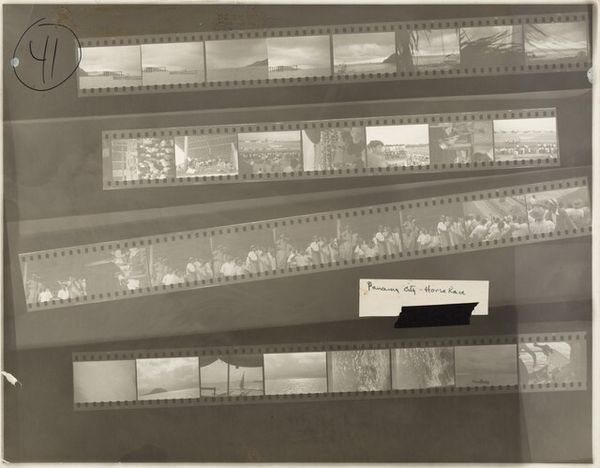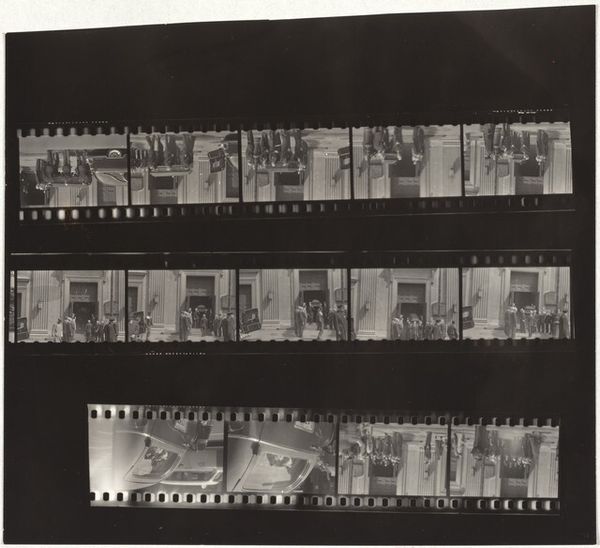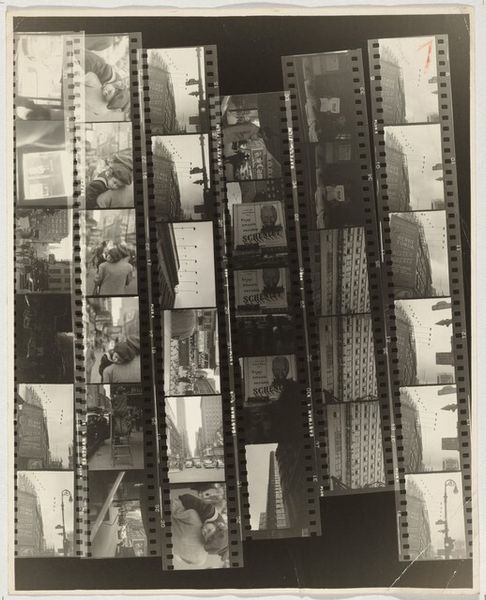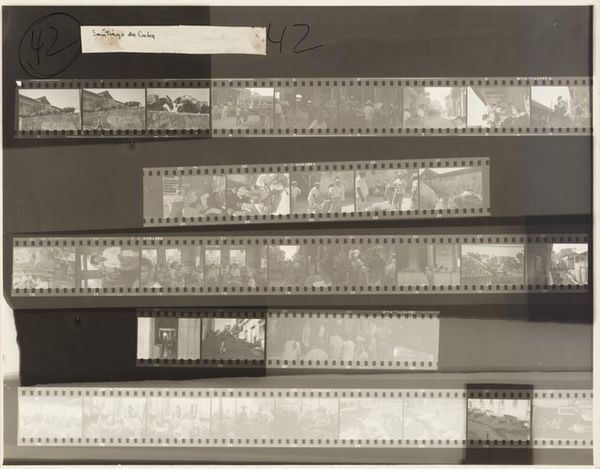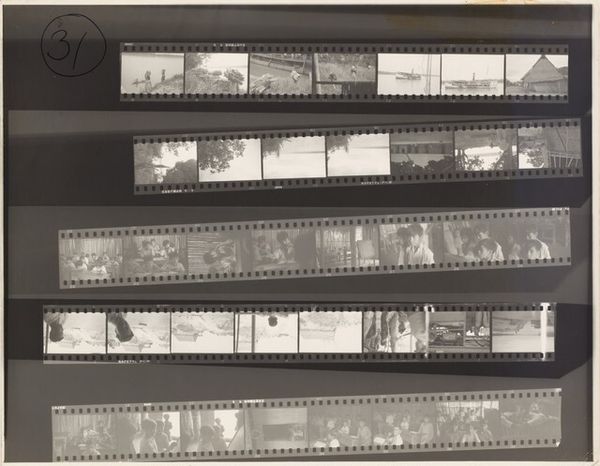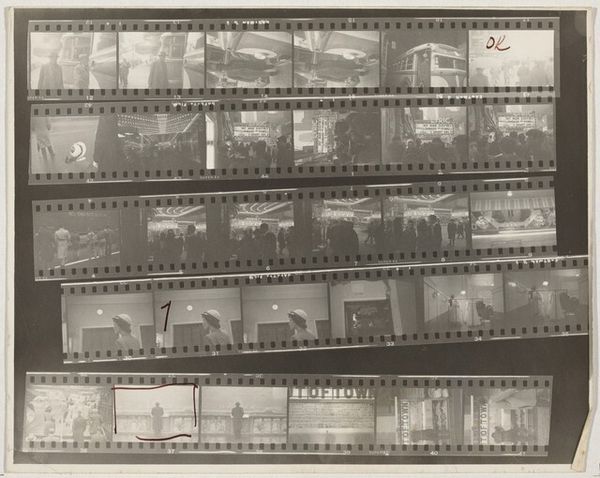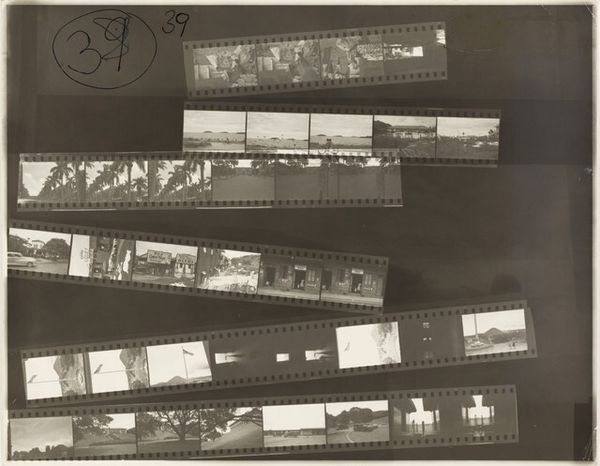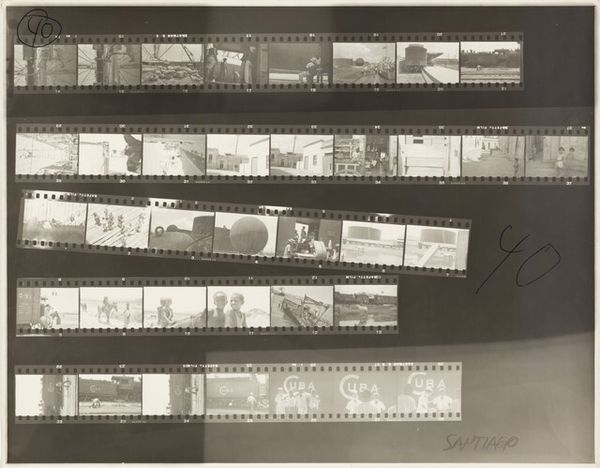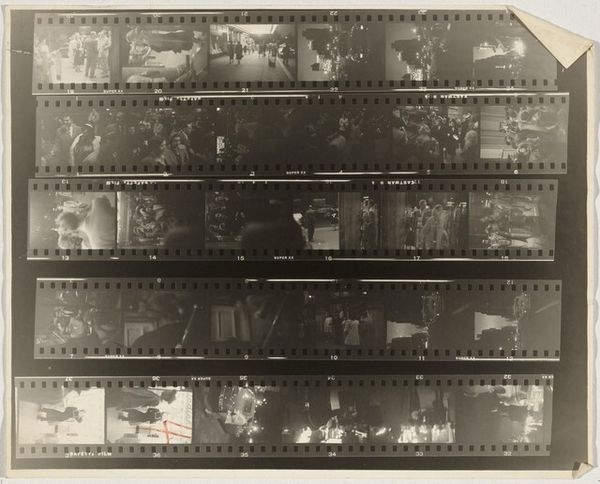
Dimensions: sheet: 27.8 x 35.4 cm (10 15/16 x 13 15/16 in.)
Copyright: National Gallery of Art: CC0 1.0
Editor: Here we have Robert Frank’s “Peru 3” from 1948, a photography piece. It shows several strips of film, almost like a contact sheet. What I find striking is the way the artist presents the raw material. How would you interpret this work, especially considering it is titled? Curator: "Peru 3"... interesting title, indeed. Instead of focusing on what's *in* the image, let's look at the materiality of it. We are presented with the photographic process itself, film strips laid bare. We aren’t looking at a finalized, polished image; we are given insight into Frank’s methods. Consider the social context: the economic realities of producing such work in post-war photography. What does this choice to showcase the ‘behind-the-scenes’ suggest about Frank’s intention regarding the commercial art world of the time? Editor: So, by showing us the film strips, he’s making a comment on the means of production, right? Almost like he's resisting the traditional presentation of photography. Curator: Exactly! It challenges the conventional separation between high art and craft, forcing us to acknowledge the labor and the raw material inherent in creating these photographs. We are dealing directly with materiality and artistic labor. The ‘finished product’ becomes less about a single image and more about the photographic process within a society consumed by the aesthetic. Editor: I see now. So, instead of just looking at the images *from* Peru, we are meant to think about *how* those images came to be. Thank you. I would not have noticed these elements otherwise. Curator: Precisely! That is one approach. This gives us a way of thinking about photography less as capturing 'reality' and more as another kind of work, enmeshed in the economics and practices of its time.
Comments
No comments
Be the first to comment and join the conversation on the ultimate creative platform.
